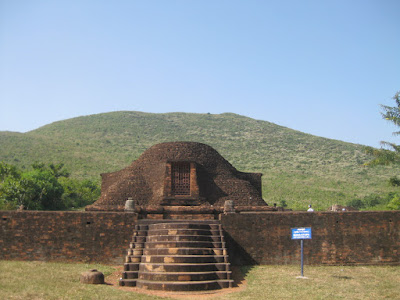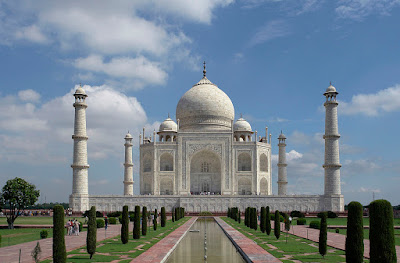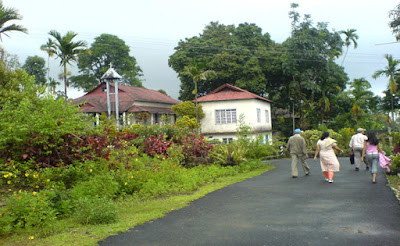In the Buddha's Footsteps
ODISHA MAY BE BETTER KNOWN FOR ITS PURl JAGANNATH TEMPLE. BUT THE OLD TOWNS OF THIS COASTAL STATE HOLD THE SECRETS TO A FLOURISHING BUDDHIST PAST
Buddhism in Odisha is as old as the Buddha himself. Buddhist literature such as Mahavagga and Angutara Nikaya narrate that Tapassu and Bhallika, the first two disciples of the Buddha, were from Utkala or ancient Odisha. Later, in 261 BC, Emperor Ashoka fought his great war against the state of Kalinga (then Odisha, plus parts of Andhra Pradesh and Chattisgarh). The Kalinga War would prove to be a turning point in the life of Asoka and that of Buddhism. The carnage of the war famously prompted the Emperor to convert from Chandashoka (Ashoka the Cruel) to Dharmashoka (Ashoka the Righteous). It also transformed Buddhism from a local religion of the Tarai region into an international belief. In Odisha, Buddhism witnessed roaring prosperity under Ashoka and continued to receive patronage during the rule of the Bhauma Karas, as attested by a series of copper plate grants issued by them and their feudatories.
Plethora of inscriptional references, such as Sadabhu Tissa, Uttara Devaya, Phupagiriand Vardhamana prove that the growth of Buddhism in this part of India was astonishing. The discovery of a series of monasteries (Viharas), stupas, Buddhist cult images and scores of relics of stone, metal and terracotta imply that Buddhism in Odisha extended for a long time from 4th-3rd century BC to 12th century CE. Buddhist establishments along the Ganga and Sodavari, and from Cuttack to Siripur along the Mahanadi promoted learning of all sects of Buddhism — Hinayana, Mahayana, Vajrayana and Tantrayana. In a way, these establishments, such as Ohauli, Lalitgiri, Ratnagiri, Udayagiri and Langudi bespeak in eloquent terms the genesis, evolution and subsequent decay of a great tradition of Buddhist religion, art, architecture and learning — until Buddhism succumbed to the all absorbing force of Hinduism, which adopted Buddha as the ninth incarnation of Vishnu as reflected in the Jagannath cult.
BUDDHIST CIRCUIT UDAYGIRI HILL
Located 78 km from Cuttack and 100 km from Bhubaneswar, Udaygiri is one of the most important Buddhist pilgrimage destinations in Odisha. Excavations throw light on the existence of a Buddhist brick monastery between the seventh and 12th centuries. Scholars now believe that the ancient name of this monastery was Madhavpura Mahavira. Udaygiri also has remains of a brick stupa, a stone stepwell with inscriptions, rock-cut sculptures at the top of the hill and figures of Dhyani Buddha.
LALITGIRI HILL
At Lalitgiri, Buddhist ruins and remains date back to the first century. It is perhaps one of the earliest Buddhist sites in the area. The excavations at Lalitgiri have unearthed ruins of a large brick monastery, the remains of the Chaitya hall, several votive stupas and a renovated stone stupa at the top of a small, rugged sandstone hill. A casket containing sacred relics, perhaps belonging to the Tathagat himself, has been discovered in the stone stupa. The museum at Lalitgiri has several Mahayana sculptures, including the gigantic Boddhisattva statues, and statues of Tara and Jambhala, among others.
RATNAGIRI
Ratnagiri Hill is known to have the most extensive ruins and is famous for housing the monastery of Pushpagiri, mentioned by the Chinese Buddhist monk and explorer, Hiuen Tsang. Most of the sculptures found here date back to the eighth and ninth centuries. An ancient stupa containing relics preserved in caskets of stone was also discovered here.
DHAULI HILL
On the bank of the Daya river stands Dhauli Hill. It was here that, in the third century BC,
Emperor Ashoka fought the fierce Kalinga War that would change the course of his life. He carved 13 edicts in the rocks with a sculpted elephant at the top — a motif that later became the universal symbol of Buddhism. In the 1970s, a peace pagoda (Shanti Stupa) was built at Dhauli, jointly by the Japan Buddha Sangha and the Kalinga Nippon Buddha Sangha. A monastery named Saddharma Vihar was also constructed here around the same time. Today, Ohauli is one of the most important pit-stops on the Odisha Buddhist Circuit.
LANGUDI HILL
Nearly 90km from the Mahanadi delta in Cuttack district, bifurcating from Jaraka on NH 5, is Langudi. Famous as the site of Pushpagiri, it hosts the Mahavihara campus, an important Buddhist centre of advanced learning. Spread over three hilltops, this campus is said to have been larger than even the Nalanda or Taxila universities. It bears numerous stupas, monasteries, temples and sculptures made in the architectural style of the Gupta period.
For more details: Tours to India & Religion Tour in India





Comments
Post a Comment